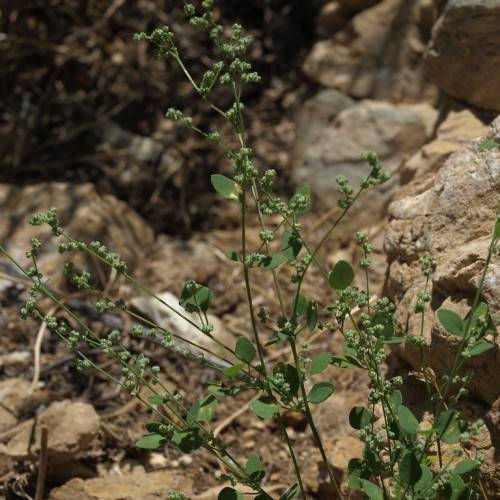
Dark Lamb's Quarters
Chenopodium atrovirens
Also Known As - Pinyon GoosefootWatering:
Minimal
Hardiness Zone:
Flowers:
Flowers
Sun:
full sun,part shade
Fruits:
Fruits Ready In Fall
Edible:
Yes
Leaf:
Yes
Growth Rate:
Low
Poisonous To Humans:
Yes
Poisonous To Pets:
Yes
Drought Tolerant:
Yes
Salt Tolerant:
Yes
Thorny:
Yes
Invasive:
Yes
Care Level:
Medium
watering
Nettle-Leaved Goosefoot (Chenopodiastrum murale) is a drought tolerant plant and can tolerate periods of dry soil. It should be watered deeply and infrequently for best results. Water your Nettle-Leaved Goosefoot every few weeks when the top inch of soil is dry and water until the soil is moist to a depth of 6-8 inches. It is best to water in the morning to reduce the occurrence of fungal diseases and leaf burn. Reduce watering during winter months when the plant is dormant.
sunlight
Nettle-Leaved Goosefoot (Chenopodiastrum murale) is a fast-growing, annual herb that prefers to grow in sunny locations. It prefers full sun and can tolerate partial shade, but will need about 6-8 hours of direct sunlight each day for optimum growth. Bright, indirect light will also be beneficial during the later parts of the day for this plant species. Sunlight should be most intense during the middle of the day when this plant species is likely to receive the most direct sun.
pruning
Nettle-Leaved Goosefoot (Chenopodiasterium murale) should be pruned generally once per year, in the early spring before new growth appears. Trim any damaged or excessively long stems and then lightly shape the plant to the desired form. Be sure to use sharp pruning shears to achieve a clean cut. To control the size of the plant, cut stems back to between 1/3 and 1/2 of their original size. Avoid heavy pruning as this could damage the fragile stems and make the plant appear unbalanced. It is best to prune Nettle-Leaved Goosefoot in the morning or late afternoon hours when the temperatures are cooler.
